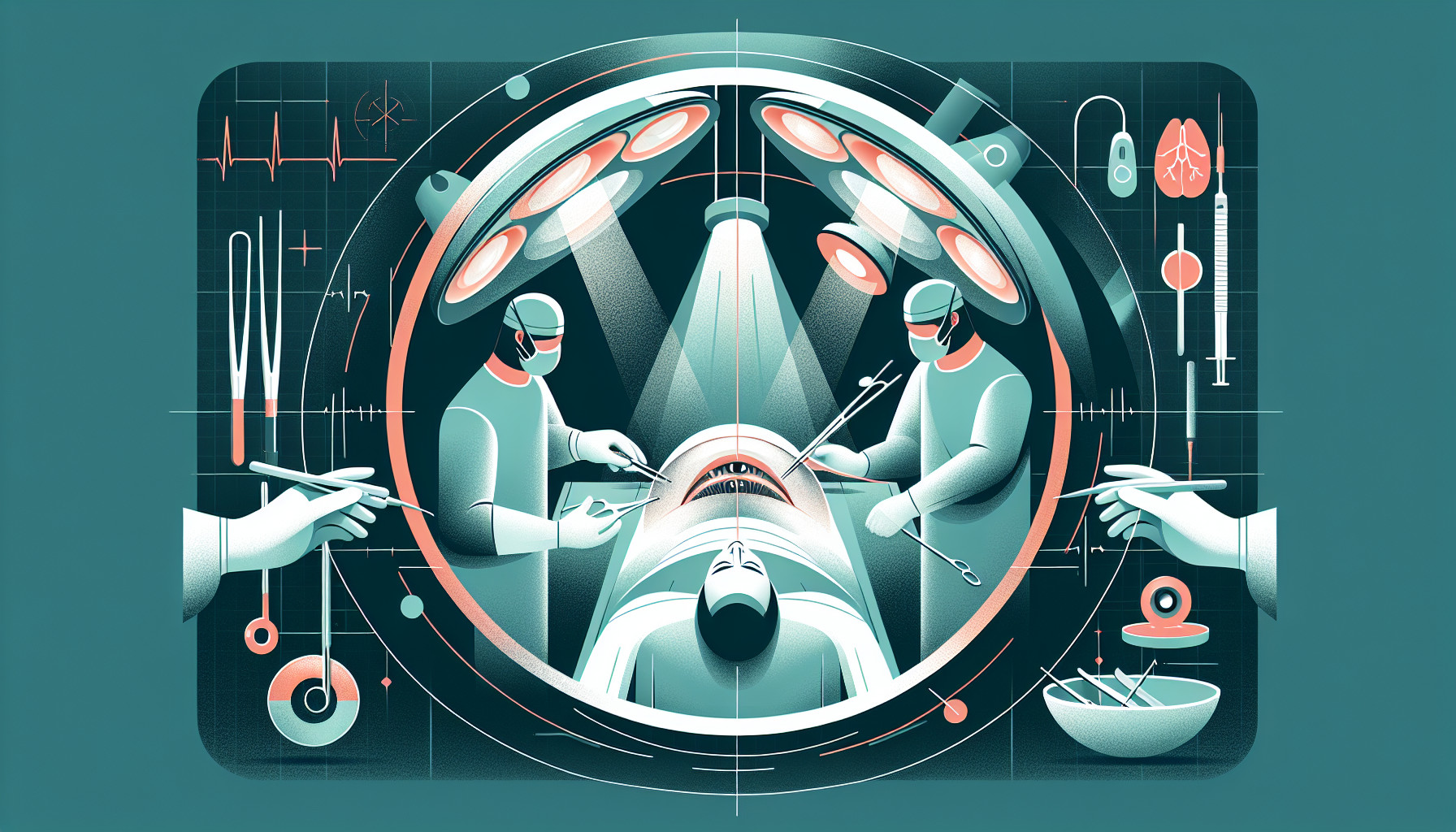Our Summary
This research paper is about the process of cataract surgery, specifically a method called phacoemulsification. Usually, patients lie flat on their back during this surgery. However, some patients can’t lie flat due to various health issues or physical deformities. The study looks at past publications and the authors’ own experiences with different ways of positioning these patients during surgery.
The results show that to successfully perform cataract surgery, it’s important that both the patient and the surgeon are comfortable. The paper highlights the significance of the patient’s position, the microscope’s position, the design of the operating table, the anesthesia technique, and the surgical approach. Essentially, surgeons often have to be creative and use their experience to find the best way to position these patients for the surgery.
FAQs
- What is phacoemulsification in relation to cataract surgery?
- How does the patient’s position, the microscope’s position, and the design of the operating table affect the success of cataract surgery?
- What alternatives are there for patients who can’t lie flat on their back during cataract surgery?
Doctor’s Tip
A helpful tip a doctor might give a patient about cataract surgery is to follow all pre-operative instructions provided by the surgeon, such as not eating or drinking after midnight the night before the procedure. This helps ensure a successful surgery and reduces the risk of complications.
Suitable For
Patients who are typically recommended for cataract surgery include those who have significant visual impairment due to cataracts, leading to difficulty in performing daily activities such as driving, reading, or watching television. Additionally, patients who experience glare or halos around lights, have difficulty seeing at night, or have a significant decrease in visual acuity are also good candidates for cataract surgery.
Other factors that may indicate the need for cataract surgery include a decrease in contrast sensitivity, changes in color vision, or a decrease in the quality of life due to vision impairment. Patients with cataracts that are causing significant refractive errors or are affecting the health of the eye may also be recommended for surgery.
Overall, the decision to proceed with cataract surgery is made on a case-by-case basis by the patient’s ophthalmologist or eye surgeon, taking into consideration the patient’s symptoms, visual acuity, and overall eye health.
Timeline
Before cataract surgery:
- Patient undergoes a comprehensive eye examination to diagnose cataracts and determine the severity.
- Patient discusses surgical options with their ophthalmologist and decides on a treatment plan.
- Patient may need to undergo pre-operative testing and evaluations to ensure they are healthy enough for surgery.
- Patient may need to stop taking certain medications or adjust their medication regimen leading up to surgery.
- Patient receives instructions on how to prepare for surgery, including fasting before the procedure.
After cataract surgery:
- Patient is monitored for a short period after surgery to ensure there are no immediate complications.
- Patient may experience some discomfort, blurry vision, or sensitivity to light in the days following surgery.
- Patient may need to use eye drops or other medications to prevent infection and promote healing.
- Patient may need to wear a protective shield over the eye while sleeping to prevent accidental rubbing or bumping.
- Patient follows up with their ophthalmologist for post-operative appointments to monitor healing and assess vision improvement.
What to Ask Your Doctor
Some questions a patient should ask their doctor about cataract surgery include:
- What is the success rate of cataract surgery?
- What are the potential risks and complications associated with the surgery?
- What type of anesthesia will be used during the procedure?
- Will I need to stop taking any medications before the surgery?
- How long is the recovery process and what can I expect in terms of post-operative care?
- Will I need to wear an eye patch or protective shield after the surgery?
- How soon after the surgery can I resume normal activities, such as driving or exercising?
- Are there any restrictions on bending, lifting, or other physical activities during the recovery period?
- Will I need prescription eye drops or medications after the surgery?
- What should I do if I experience any unusual symptoms or complications after the surgery?
Reference
Authors: Rentka A, Kemeny-Beke A. Journal: Semin Ophthalmol. 2018;33(4):443-448. doi: 10.1080/08820538.2017.1296167. Epub 2017 Mar 8. PMID: 28272966
